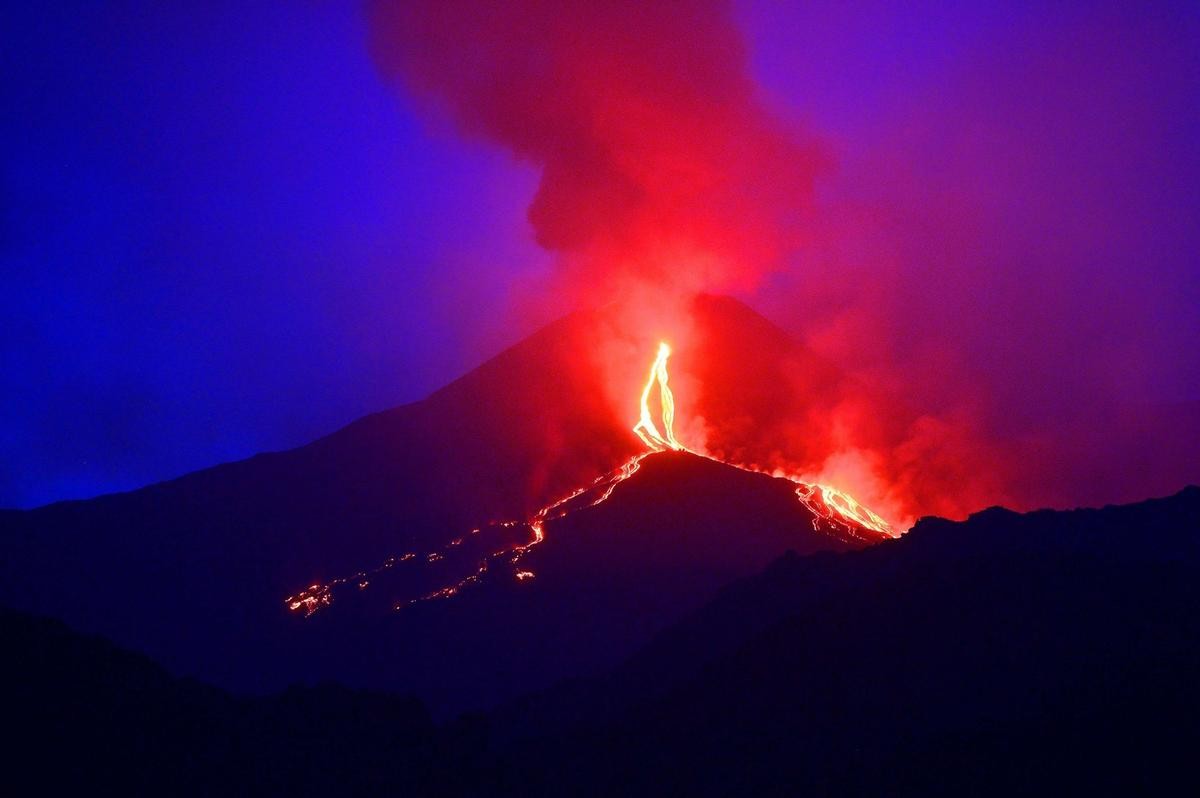
In 1986, a tragedy struck the village near Lake Nyos in Africa, where over 1,700 lives were lost in a single night.
The village, once bustling with life, was transformed into a silent graveyard. The entire community was wiped out, a scenario that is often seen as a malevolent curse and a rarity in real life.
This devastating event came to light when external communication revealed the stark contrast between the village's former vibrancy and its current state of desolation. Every single person in the village, along with other living beings, met their end overnight.
The rescue team was initially incredulous upon hearing the reports, even suspecting a prank. However, their arrival at the village confirmed the grim reality, with animal carcasses littering the area. As the most advanced form of life, humans were not exempt from this fate. The villagers had become lifeless bodies scattered across the village. Their pale faces were twisted in agony, their bodies sprawled out in bizarre postures, suggesting they had suffered greatly before death.
The scale of the tragedy—over 1,700 lives, along with countless animals—vanished in one night, spreading fear and unease. The entire area seemed to be engulfed in an eerie and terrifying atmosphere, leading some superstitious individuals to speculate about divine retribution.
But what could cause such a catastrophic event? The investigation began with the examination of the bodies, which, aside from their distorted state and pale appearance, bore noticeable burn marks. If only a few individuals had burns, it might have been attributed to the use of torches or other fiery tools in a panic. However, the burns on every single person pointed towards a heat source in the environment.
A heat source capable of causing burns in over a thousand people should be easy to identify, such as a massive fire or a colossal bomb. However, if it were a fire, the flames would have been visible, especially as they spread through the grass and trees, making it unlikely for the fire to extinguish suddenly after causing so many deaths. Moreover, a fire would not have spread so quickly as to leave no one alive, let alone with no opportunity to call for help.
Therefore, the heat source must have been extremely rapid and unforeseen. Could it have been a bomb? This seemed unlikely as well. The rescue team ruled out fire due to the absence of flames and fire damage at the scene. Fire leaves distinct traces, such as ashes from burnt objects, which were not present. Similarly, a bomb would leave significant evidence of its explosion, such as destroyed buildings and fragmented bodies, but the scene showed no such damage.
The possibility of a biological weapon was also considered, given the large number of casualties with no visible wounds. However, biological weapons typically release toxic gases, which should have left signs of poisoning on the bodies and lingering in the air, but no such evidence was found.Infectious diseases are also excluded because most infectious diseases have an incubation period and vary in duration depending on individual health. Food poisoning was also ruled out as the cause of death, as autopsies revealed no signs of poisoning and it was unlikely to be linked to the burns.
With no clear answers, the investigation turned to the village's environment, where a tranquil and beautiful lake caught the attention of the investigators. Could this lake be connected to the disaster?
The Mystery of Lake Nyos
The village in question was located in Cameroon, West Africa, and like many African villages, it had farms, courtyards, and a way of life centered around agriculture. There was nothing particularly unusual about its environment, except for the presence of Lake Nyos.
Upon discovering the lake, the investigation team sensed that the origin of this mysterious disaster lay within its waters. This was not a hunch; they found evidence to support their suspicions. While most of the bodies were found near the village, closer to Lake Nyos, the number of animal carcasses increased. It appeared that land animals had tried to flee from the lake area, as indicated by their positioning. Additionally, many dead fish were found on the shore, suggesting they had once lived in the lake but had inexplicably died en masse.
The lake itself exhibited abnormalities. The normally beautiful lake was surrounded by mud, and the trees around it were chaotic and lifeless. Some large trees had even been uprooted due to their
distort. Furthermore, the lake's water was red instead of the usual blue or green. A pungent smell hung in the air near the lake.
These signs pointed to something amiss with Lake Nyos, prompting the investigation team to focus their efforts there. Systematic investigation and data measurement revealed that the water level of the lake had dropped significantly. "Lake Nyos must have experienced something unknown, and the deaths are related to it," the team concluded.
Despite their suspicions, the team was puzzled. How could a lake possess such destructive power? Familiar natural disasters like tsunamis, volcanic eruptions, and earthquakes require immense energy and cover vast areas, whereas a lake is comparatively small. This led some to doubt Lake Nyos as the culprit.
Fortunately, a traveler passing by provided a crucial clue that also pointed towards the lake. He recalled hearing a sound like boiling water on the night of the incident, which likely originated from the lake. If it had been boiling water in a villager's home, it would not have been audible outside, let alone to someone camping nearby.
The sound of boiling water helped explain the burns on the bodies. They could have been caused by contact with the boiling lake surface or by the high-temperature steam that rapidly filled the air. The steam's high temperature resulted in burn marks on the bodies. Additionally, the boiling sound accounted for the drop in the lake's water level, as the heat caused evaporation.

However, the mystery of why the lake's water boiled remained. Normally, water boils when heated, but the temperature in the area was not high enough to cause the entire lake to boil. The investigation team was baffled and, determined to uncover the cause of the tragedy, decided to drain Lake Nyos in the hope of finding the culprit.

Unveiling the Culprit
Initially, the team suspected the presence of some explosive substance in the lake, but after analyzing the water's composition, they found no trace of explosives. Despite the setbacks, the team pressed on, aware of the disaster's severity and the potential for it to recur if the cause was not identified. They decided to drain the entire lake, a decision that uncovered the truth.
Lake Nyos, seemingly just a lake, was in fact a volcanic crater lake. This meant that it was surrounded by volcanoes and situated in a relatively flat area at the mouth of a volcano. Water had collected there, hiding the fact that there was a significant amount of magma beneath the lakebed. The movement of this magma released carbon dioxide, which then accumulated in the lake water.
As with carbonated drinks, the carbon dioxide formed bubbles that caused the water to boil. When the carbon dioxide in the lake reached saturation, it exploded like a shaken carbonated drink when opened suddenly. On the night of the disaster, Lake Nyos' carbon dioxide was in a state prone to explosion.
It is believed that heavy rainfall leading to landslides in the area disrupted the stratification of the lake's water due to differences in carbon dioxide concentration. This set off a chain reaction, causing the carbon dioxide to erupt from the lake, reaching heights of hundreds of meters and generating waves up to 25 meters high.
The release of vast amounts of carbon dioxide into the air created an asphyxiating environment, leaving the people with no means of escape or resistance, resulting in their deaths from oxygen deprivation.
Conclusion
The presence of magma beneath the lake, rich in iron and phosphorus minerals, explained the reddish color of the water. After identifying the cause of the disaster, measures were finally taken to address the issue. In fact, Lake Nyos had experienced a similar event prior to the major disaster, resulting in 37 deaths. If the previous incident had been taken more seriously and steps had been taken to manage the lake's carbon dioxide emissions, the tragedy of losing over a thousand lives might have been prevented.
Currently, the government has installed exhaust pipes at the bottom of the lake to prevent such an event from happening again. Have you ever heard of a similar event?